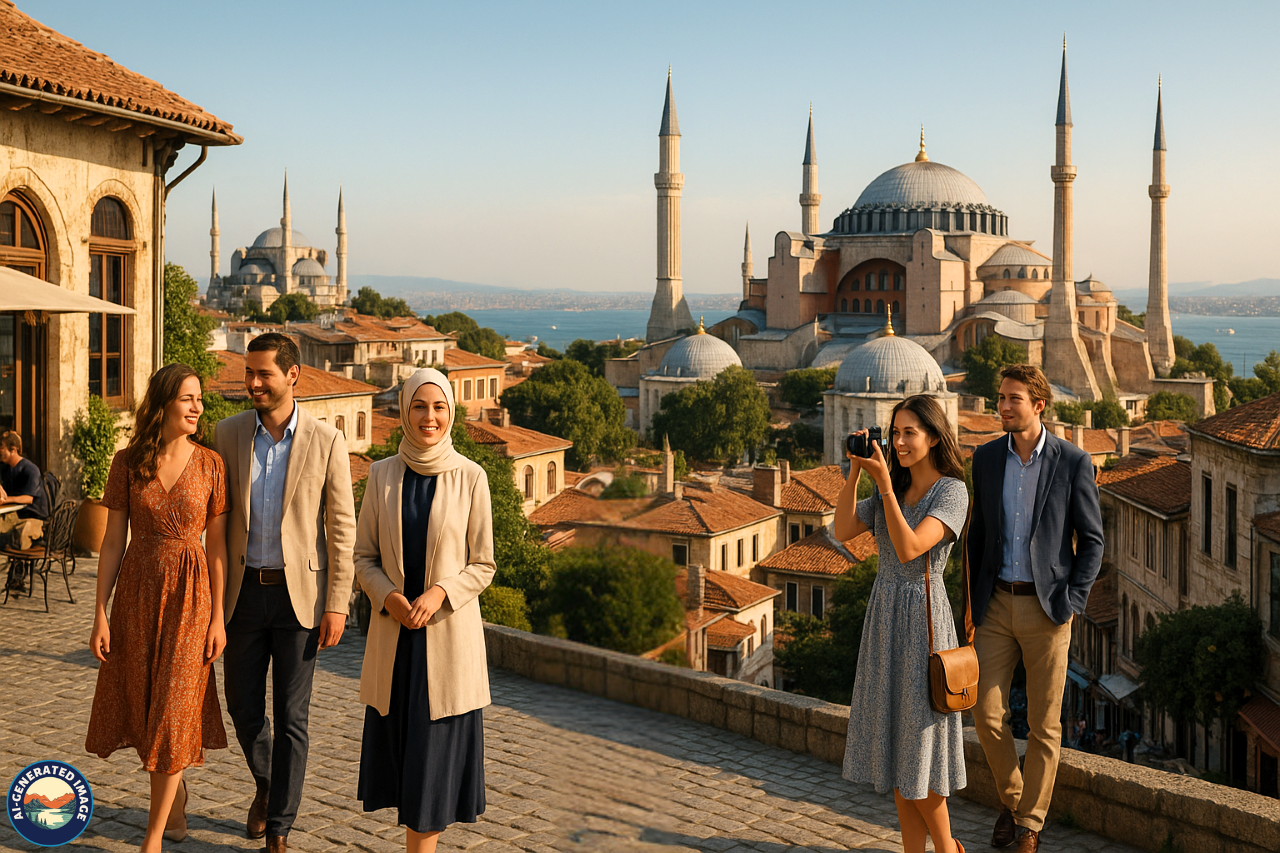Introduction
Perched between two continents—Europe and Asia—Istanbul is a rare jewel among global cities. It is the only metropolis in the world where East genuinely meets West, not just in geography but also in spirit, architecture, cuisine, and culture. With its deep-rooted heritage, lively street life, and a skyline filled with domes and minarets, Istanbul offers a captivating blend of the ancient and the modern. Whether sipping tea by the Bosphorus or wandering through millennia-old landmarks, visitors are drawn into the city’s enchanting rhythm.
Historical Background
Istanbul’s history stretches back more than 2,500 years. Originally founded as Byzantium by Greek settlers, it thrived due to its strategic location on vital trade routes. In 330 CE, Emperor Constantine the Great renamed it Constantinople, transforming it into the capital of the Roman Empire. It later became the heart of the Byzantine Empire, famous for its grand cathedrals, mosaics, and religious significance.
In 1453, Sultan Mehmed II of the Ottoman Empire conquered the city, initiating a new chapter in its story. Constantinople was renamed Istanbul, and its skyline evolved to include majestic mosques, palaces, and bazaars. The city became a cultural and political hub of the Islamic world.
Following the fall of the Ottoman Empire, the Republic of Turkey was founded in 1923. While Ankara became the new capital, Istanbul retained its role as the cultural and economic center of the country. Today, the city thrives as a vibrant, global metropolis with layers of history at every turn.
Key Districts and Neighborhoods to Explore
Sultanahmet – The Historical Core
Sultanahmet is home to some of the city’s most iconic monuments, including the Hagia Sophia, Blue Mosque, and Topkapi Palace. Its cobblestone streets, historic buildings, and boutique hotels offer visitors an immersive glimpse into Istanbul’s rich past.
Beyoğlu – The European Spirit
Located across the Golden Horn, Beyoğlu features 19th-century European architecture, vibrant art galleries, and eclectic restaurants. Istiklal Avenue is a lively pedestrian street leading to Taksim Square, while Galata Tower offers breathtaking panoramic views.
Kadıköy – Creative and Local
On the Asian side, Kadıköy offers a local vibe, with bustling markets, street art, and cozy cafes. The Moda neighborhood, in particular, is popular for its seaside promenade, making it a favorite for sunset strolls and relaxed afternoons.
Üsküdar – Peaceful and Panoramic
Also on the Asian side, Üsküdar is steeped in tradition. Its waterfront is lined with Ottoman mosques, and Çamlıca Hill provides some of the most stunning views in the city. It’s a great place to escape the crowds while still enjoying Istanbul’s charm.
Must-Visit Attractions
Hagia Sophia
Once a church, then a mosque, and later a museum, Hagia Sophia is a masterpiece of Byzantine architecture. Today, it serves once again as a mosque, showcasing both Christian mosaics and Islamic calligraphy under one magnificent dome.
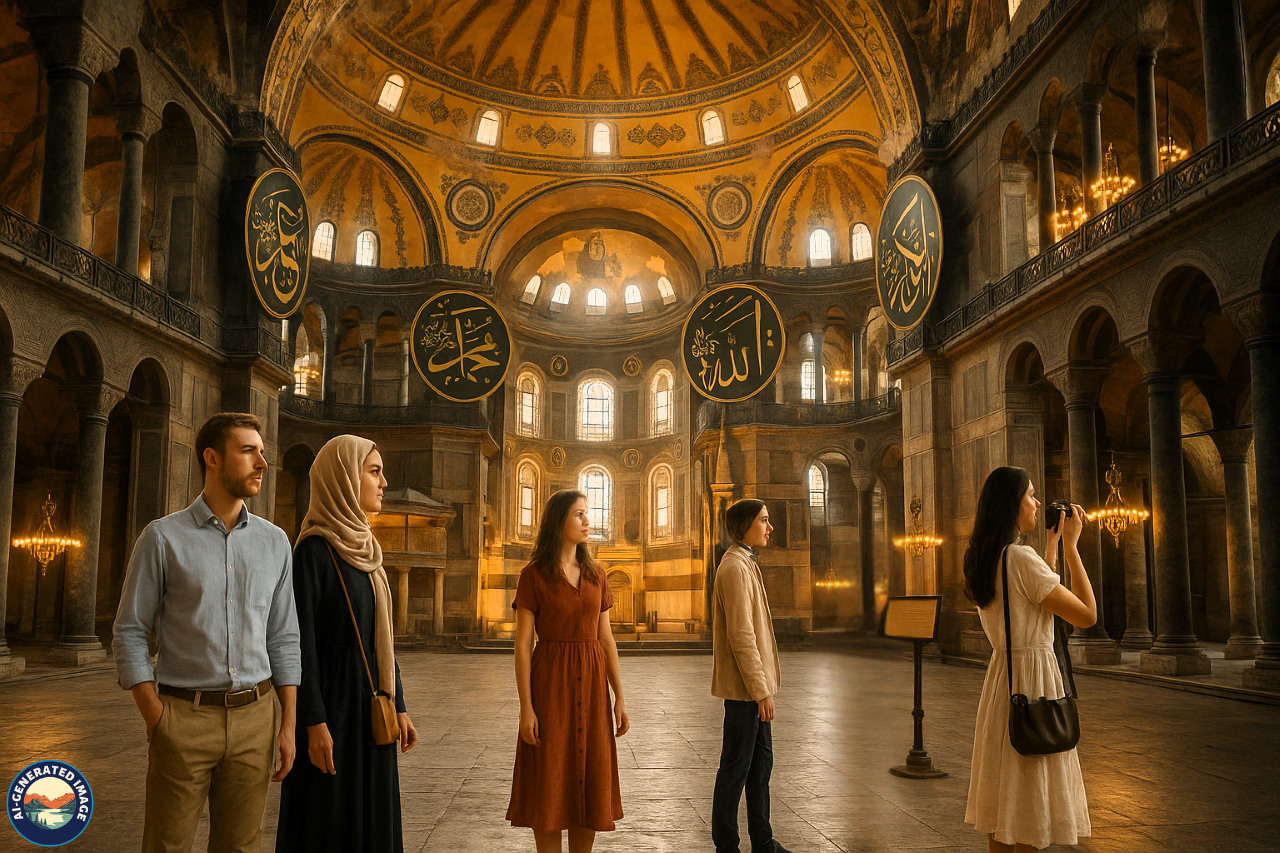
Blue Mosque
The Blue Mosque, also known as the Sultan Ahmed Mosque, is famous for its six minarets and intricate blue tile work. Still a functioning mosque, it remains one of Istanbul’s most visited landmarks.

Topkapi Palace
For centuries, Topkapi Palace was the residence of Ottoman sultans. Visitors can explore its opulent courtyards, treasury filled with jewels, and the famous Imperial Harem, once home to the sultan’s family and courtiers.
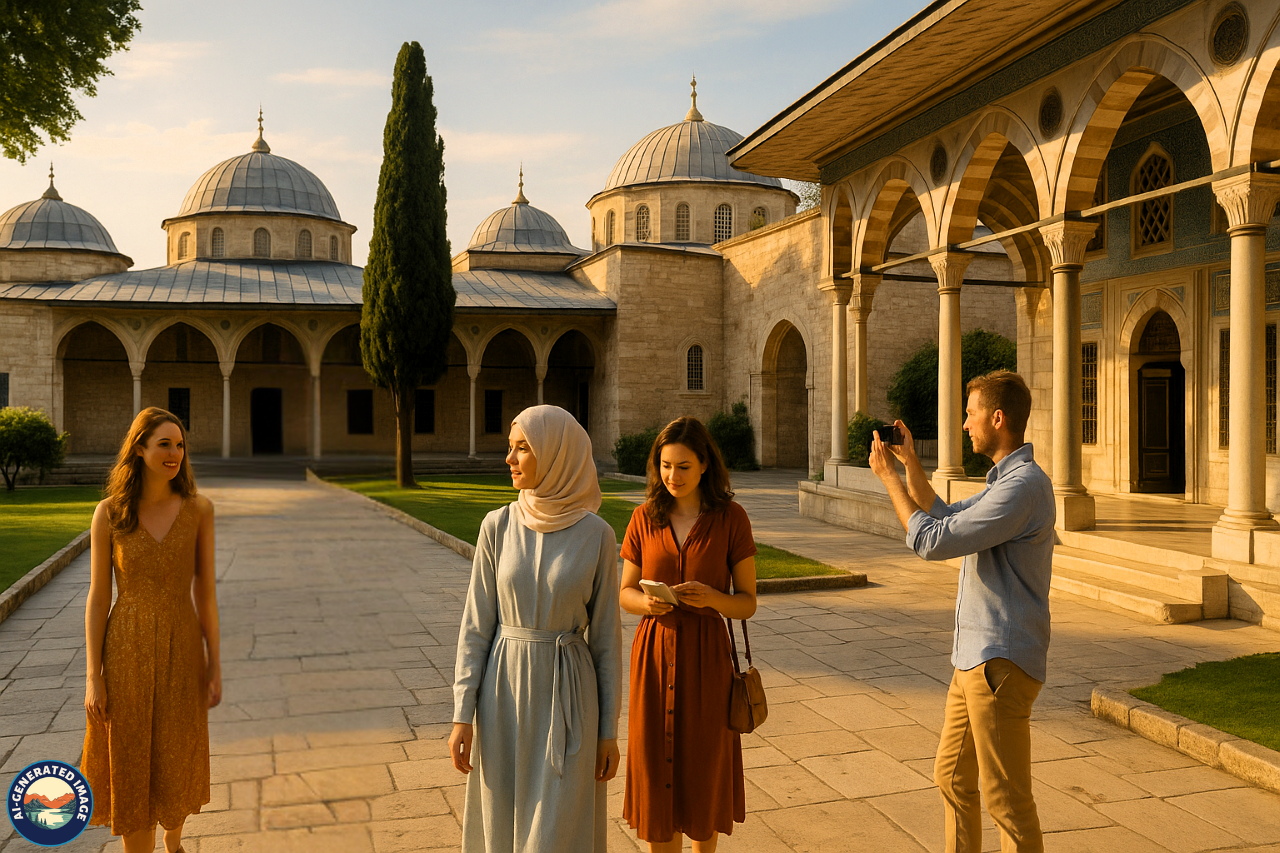
Basilica Cistern
An underground marvel, the Basilica Cistern was built in the 6th century to store water. Supported by 336 marble columns, it offers a mysterious and atmospheric experience. Don’t miss the two Medusa heads hidden within.
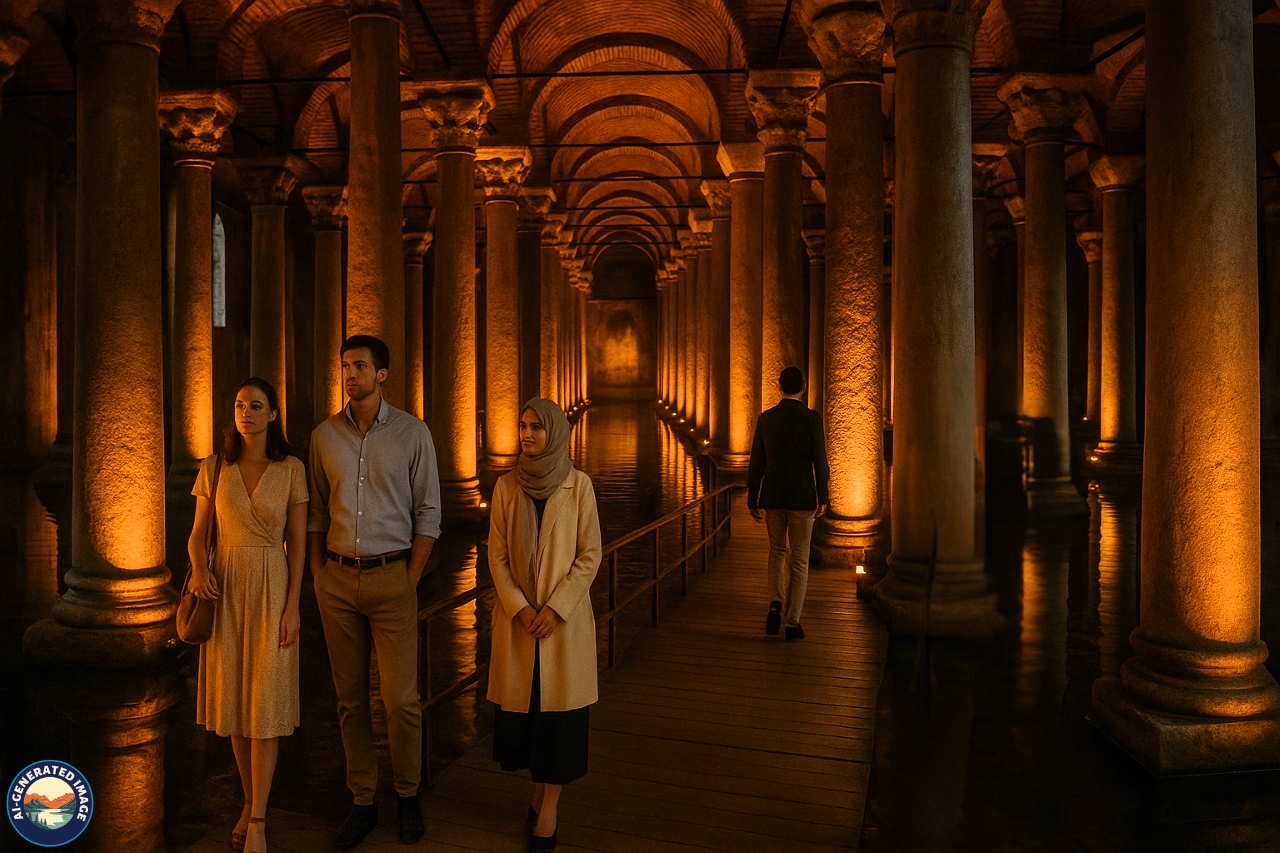
Grand Bazaar
With over 4,000 shops, the Grand Bazaar is one of the world’s oldest and largest covered markets. It’s an ideal place to shop for souvenirs, carpets, jewelry, ceramics, and more.
Spice Bazaar
Also known as the Egyptian Bazaar, this vibrant market is filled with the aromas of saffron, sumac, dried fruits, herbal teas, and Turkish delight. It’s a sensory feast for every visitor.
Galata Tower
Originally built in the 14th century, the Galata Tower offers spectacular views of the city and the Bosphorus. The observation deck is especially popular at sunset.
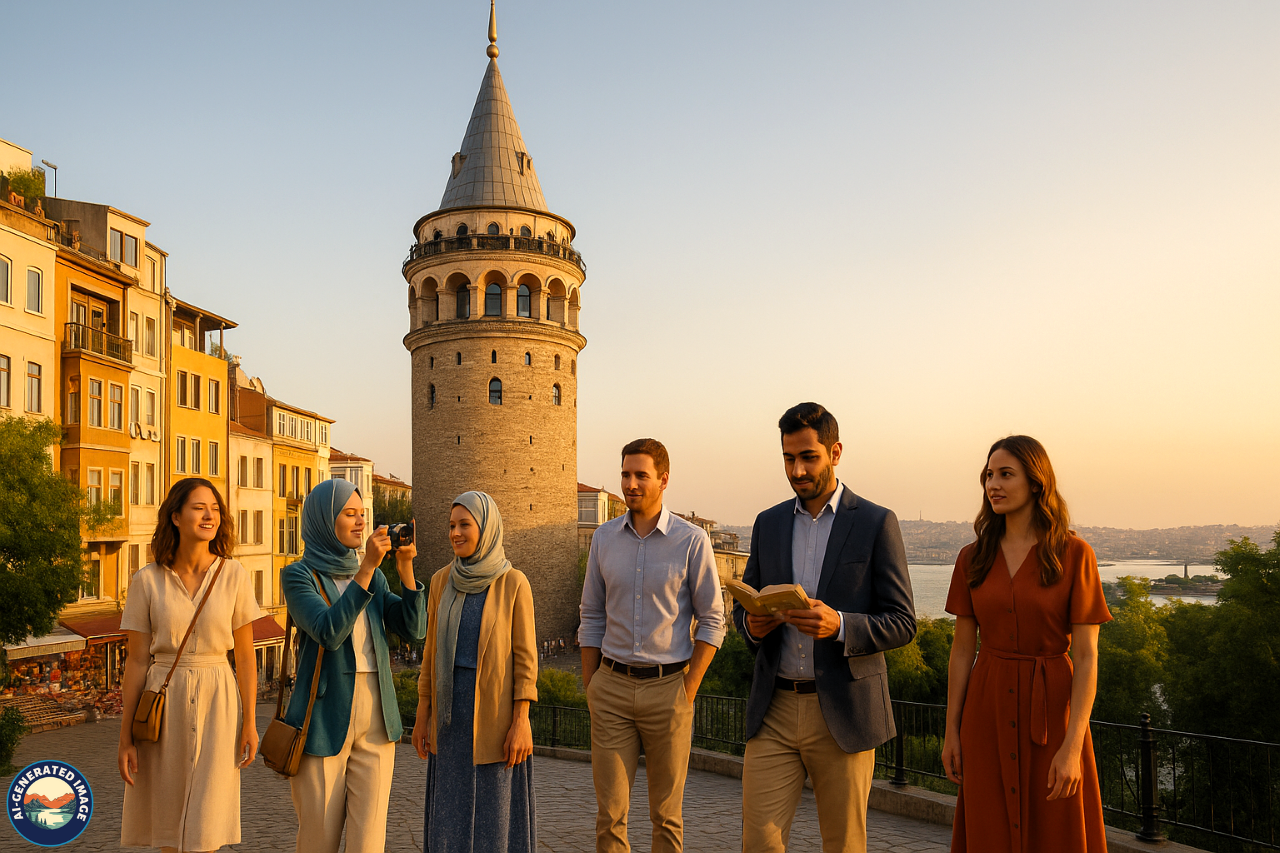
Unique Experiences
Bosphorus Cruise
A Bosphorus cruise offers a unique way to see Istanbul from the water. You’ll glide past Ottoman palaces, mosques, suspension bridges, and scenic waterfront neighborhoods. Evening cruises are particularly magical.
Traditional Hammam Experience
Step into a Turkish bath for a cleansing ritual that dates back centuries. Historic hammams like Çemberlitaş Hamamı offer steam rooms, exfoliation treatments, and relaxing massages.
Whirling Dervish Ceremony
Rooted in Sufism, the Whirling Dervish dance is both spiritual and hypnotic. Performances are held in cultural centers and give visitors a glimpse into Turkey’s mystical traditions.
Artisan Workshops
Take part in hands-on workshops where you can learn Ebru (marbling), calligraphy, or tile painting. It’s a memorable way to connect with Istanbul’s rich artistic heritage.
Food and Culinary Delights
Classic Turkish Dishes
The city’s cuisine reflects a fusion of regional flavors. Try dishes like:
-
İskender Kebab:
-
Sliced lamb with yogurt and tomato sauce
-
Manti:
-
Turkish dumplings served with garlic yogurt
-
Menemen:
-
Scrambled eggs with tomatoes and peppers
-
Pide:
-
Boat-shaped flatbread with various toppings
-
Dolma:
-
Stuffed vegetables, usually vine leaves
Delicious Desserts
No trip to Istanbul is complete without sampling:
-
Baklava:
-
Layers of filo pastry filled with pistachios
-
Künefe:
-
A Sweet cheese dessert with crispy shredded pastry
-
Lokum (Turkish Delight):
-
Soft, chewy sweets in assorted flavors
-
Tavuk Göğsü:
-
A milk pudding made with shredded chicken breast
Street Food Favorites
Explore Istanbul’s streets for:
-
Simit:
-
Sesame-crusted bread rings
-
Balık Ekmek:
-
Grilled fish sandwiches at the harbor
-
Kokoreç:
-
Grilled lamb intestines with spices
-
Midye Dolma:
-
Stuffed mussels with rice and lemon
Recommended Restaurants
-
Mikla:
-
Fine dining with a view
-
Neolokal:
-
Modern Turkish cuisine
-
Çiya Sofrası:
-
Regional dishes in Kadıköy
-
Seven Hills Restaurant:
-
Rooftop dining near the Hagia Sophia
Shopping
Best Things to Buy
-
Handwoven rugs and kilims
-
Painted ceramic tiles
-
Colorful glass lanterns
-
Locally sourced spices and teas
-
Turkish leather goods
Top Shopping Spots
-
Grand Bazaar:
-
For traditional handicrafts
-
Spice Bazaar:
-
For culinary treasures
-
Istiklal Street:
-
For fashion and local brands
-
Nişantaşı:
-
For luxury shopping
Shopping Tips
-
Bargain respectfully—start with half the asking price
-
Ask for receipts and authenticity certificates for expensive items
-
Cash is preferred in smaller shops
Cultural Etiquette and Tips
-
Dress modestly when visiting religious sites
-
Remove your shoes before entering a mosque
-
Refrain from loud or disruptive behavior
-
Learn basic Turkish phrases—it shows respect
-
Tipping is customary (10–15% in restaurants)
-
Always ask before photographing people
Best Time to Visit
-
Spring (April–May):
-
Mild weather and blooming tulips
-
Autumn (September–October):
-
Pleasant temperatures and fewer tourists
-
Summer:
-
Busy but vibrant; expect high temperatures
-
Winter:
-
Quiet and budget-friendly; occasional snow adds charm
Each season reveals a different side of Istanbul’s beauty, so the best time depends on your preferences.
Getting Around the City
-
Use an IstanbulKart for seamless access to public transport
-
Trams and metros are efficient and affordable
-
Ferries offer a scenic ride between Europe and Asia
-
Use BiTaksi or Uber to avoid taxi scams
-
Many historical areas are best explored on foot
Day Trips and Excursions
-
Princes’ Islands:
-
Peaceful, car-free escapes
-
Belgrad Forest:
-
Ideal for hiking and picnics
-
Bursa:
-
The first Ottoman capital, known for its thermal baths
-
Şile and Ağva:
-
Seaside towns on the Black Sea
Each destination offers a relaxing break from the city’s bustle.
Where to Stay
Luxury Options
-
Four Seasons Hotel Istanbul at Sultanahmet
-
Çırağan Palace Kempinski
Mid-Range Hotels
-
Vault Karaköy House Hotel
-
Hotel Niles Istanbul
Budget Choices
-
Cheers Hostel (Sultanahmet)
-
Hush Hostel Lounge (Kadıköy)
Choose your accommodation based on your travel style and desired proximity to attractions.
Safety and Travel Essentials
-
Istanbul is generally safe; stay aware in crowded areas
-
Avoid unlicensed taxis and aggressive street vendors
-
Use official exchange offices for currency conversion
-
Tap water is safe, but bottled water is recommended
-
Local SIM cards with data are available at the airport
-
Download helpful apps like Google Maps and Moovit
Conclusion
Istanbul is more than a city—it’s a journey through time, a blend of civilizations, and a sensory feast. From its ancient monuments and sacred spaces to its lively markets and waterfront cafes, the city reveals something new with every visit. Whether you come for its history, food, or hospitality, Istanbul will leave a lasting impression on your heart and mind.
FAQs
Is Istanbul safe to visit?
Yes, Istanbul is generally safe for tourists. Exercise standard precautions, especially in crowded places.
Do I need a visa for Turkey?
Visa requirements vary by nationality. Many visitors can obtain an e-visa online.
How many days are ideal for Istanbul?
Three to five days allow you to see the major attractions and enjoy some local culture.
Are non-Muslims allowed in mosques?
Yes, most mosques welcome visitors outside of prayer times. Modest dress is required.
What is the currency used in Istanbul?
The Turkish Lira (₺). Currency exchange is widely available, and most places accept cards.
Is English spoken widely?
English is spoken in tourist areas, hotels, and restaurants. Learning a few Turkish phrases is helpful.
What’s the best way to get around?
Public transport using the IstanbulKart is the most economical and efficient option.

